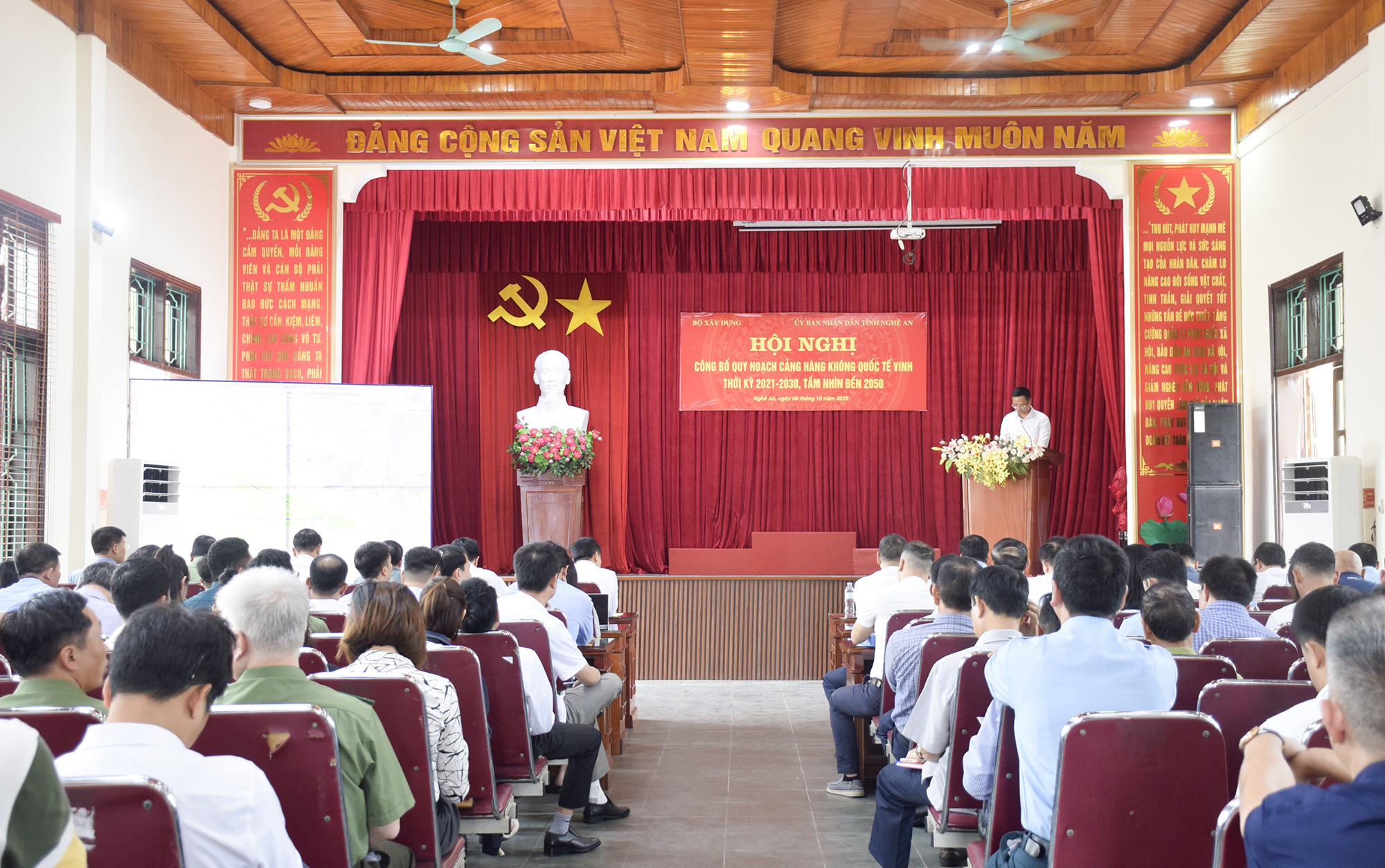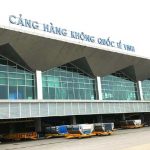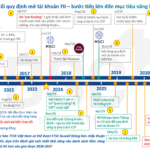On the morning of October 6th, in Vinh Hung Ward, the Ministry of Construction, in collaboration with the People’s Committee of Nghe An Province, held a conference to announce the Master Plan for Vinh International Airport for the period 2021–2030, with a vision to 2050. According to Decision No. 201/QĐ-BGTVT dated February 19, 2025, issued by the Minister of Transport (now the Ministry of Construction), Vinh International Airport is planned as a dual-use civilian and military airport, meeting ICAO’s 4E standards.
During the 2021–2030 period, the airport aims to handle 8 million passengers annually and 25,000 tons of cargo per year. By 2050, its capacity will increase to 14 million passengers and 35,000 tons of cargo annually, positioning it as a modern aviation hub for the North Central Region.
In terms of technical infrastructure, the airport will undergo comprehensive expansion. The existing runway will be extended to 3,000m x 45m, and by 2050, a second runway (02–20 direction) will be constructed to the east, enabling simultaneous operations on both runways.
The taxiway and apron systems will be modernized with three parallel taxiways, connecting roads, and rapid exit routes. The apron will be expanded to accommodate 29 aircraft parking positions by 2050, meeting the growing operational demands.
The existing Terminal 1 will be expanded to handle 5 million passengers annually. Additionally, a new Terminal 2 will be built between the two runways, initially serving 3 million passengers per year.

Conference announcing the Master Plan for Vinh International Airport (Photo: Nghe An Province’s Information Portal)
By 2050, Terminal 2 will be expanded to handle 9 million passengers annually, bringing the airport’s total capacity to 14 million passengers per year.
For cargo operations, the existing cargo terminal will be retained, and a new cargo terminal will be built north of Terminal 1, with an initial capacity of 25,000 tons per year, expanding to 35,000 tons by 2050.
The total land requirement for the project is 543.53 hectares, including 262.7 hectares for civilian aviation, 238.8 hectares for military use, and 41.988 hectares for shared purposes. This represents an additional 96.5 hectares compared to the previous plan, ensuring sufficient land for comprehensive infrastructure development.
Speaking at the conference, Vice Chairman of the Provincial People’s Committee Hoang Phu Hien expressed gratitude to the Ministry of Construction and the Civil Aviation Authority of Vietnam for their support in developing Nghe An’s aviation infrastructure. He emphasized the significance of the 2021–2030 Master Plan, with a vision to 2050, in driving the province’s socio-economic development.
The provincial leadership instructed wards and communes to publicly announce the plan to residents, facilitating boundary demarcation, land clearance, and airspace obstacle control. The Department of Agriculture and Environment was tasked with guiding land allocation, leasing, and purpose conversion procedures, as well as receiving land transferred from the Ministry of Defense for project implementation.
The Department of Construction is responsible for managing the plan, monitoring progress, and coordinating adjustments to the zoning plan around the airport, particularly for connecting transportation routes.
Vice Chairman Hien also requested the Civil Aviation Authority of Vietnam to review land use priorities and collaborate with the province to ensure timely and effective project implementation.
With its large scale and long-term vision, Vinh International Airport is expected to become a key aviation and logistics hub in the North Central Region, directly connecting to the North-South Expressway, coastal roads, and Cua Lo Port. This strategic transportation network will significantly boost regional economic development.
Previously, Vinh International Airport closed in July for repairs. Three upgrade projects, totaling nearly VND 1 trillion, are scheduled for completion by December 30th, as committed by ACV.









































